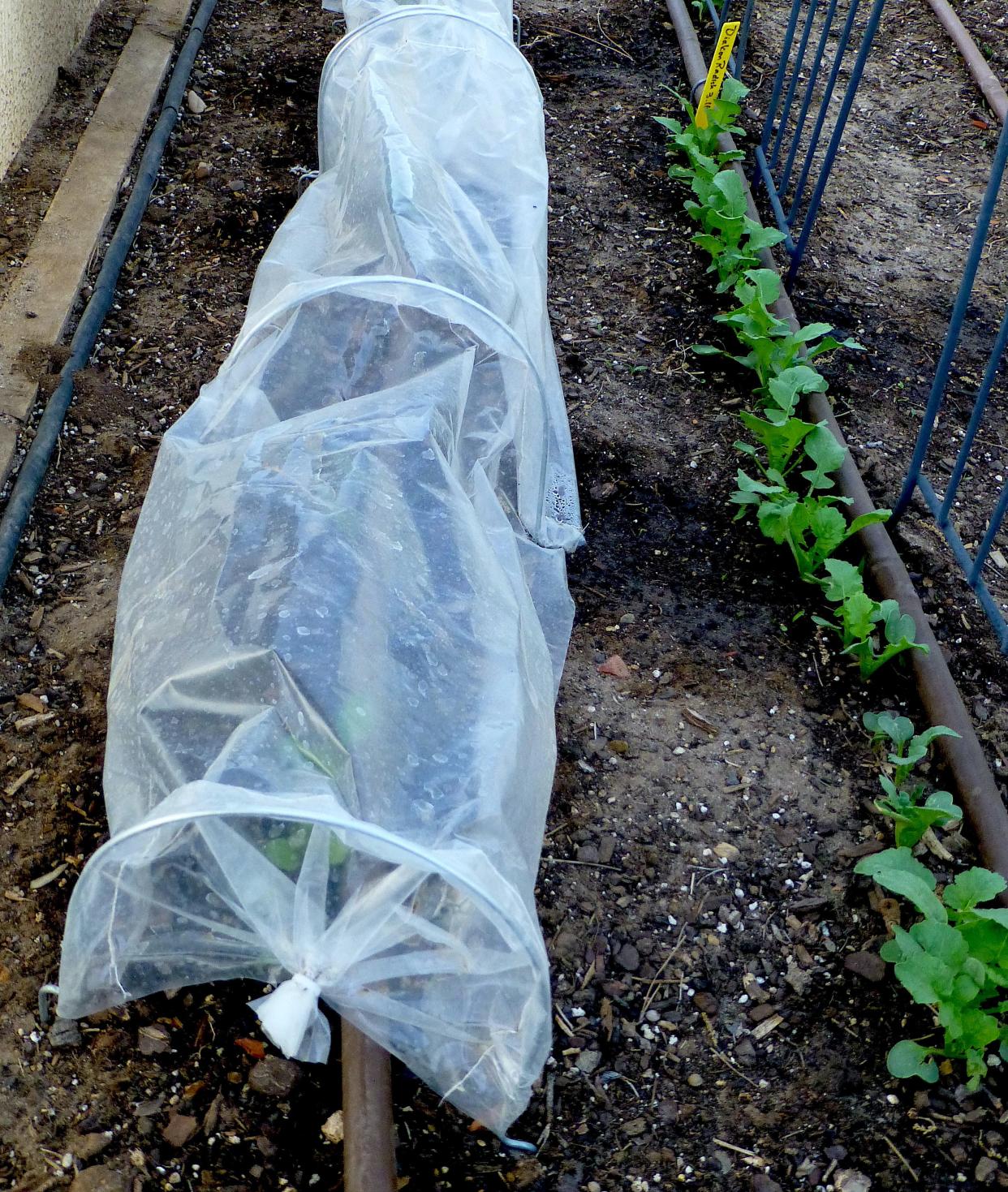Gardening for You: Tiny tunnels give seedlings a microclimate
Quick start seedlings with a microclimate boost. Tiny tunnels do just that - provide a snug, moist microclimate that shelters young seedlings.

Seeds have seed coats that protect their embedded tiny embryonic, nascent (young) plants. Germination of the embryonic plants is activated when conditions have been met, mainly temperature and moisture. As soon as seedlings emerge from the safety of their seed coat, they are immediately subjected to a harsh environment that assaults the tiny organism.
Our job as gardeners is to provide seedlings with nurturing conditions that give them the best chance of growing into healthy plants.
Tiny plastic-covered tunnels act as mini greenhouses. Seeds sown under a tiny tunnel emerge into a microclimate that protects the seedling. The tunnels shield seedlings from West Texas strong winds, provide shade against harsh sunlight, and conserves moisture by reducing soil water evaporation. The plastic covering of the tunnels also protects seedlings from birds that feed on tender young tissue and protects from nibbling rabbits.
The tiny tunnels in the accompanying photo were purchased already assembled, but making your own tunnel is simple to do.

DIY tunnel steps:
Decide on the growing area to be covered. Tunnels that serve as seedling protection do not need to be as large as those that are intended to cover full-grown plants.
Seedlings started in a seed bed need tunnels that are just large enough to cover the seed row. Small hoops suffice since the width of the area to be covered is just 6 inches wide. Secure the tunnel in position using rust-proof, galvanized steel hoops; configure hoops into an arch and set into the ground. Once hoops are in place cover with long-lasting, UV-stabilized, heavy-duty polyethylene. The plastic traps moisture and humidity, acting as a mini-greenhouse microclimate for the tender seedlings.
Fully grown plants need larger hoops. Because the arches will cover a larger area, supporting arches must be made of stronger material. PVC pipes or metal conduit must be long enough that when bent into an arch will cover the entire plant. Once hoops have been installed, cover with fabric. There are several fabric options with which to cover the hoops.
Row covers are lightweight, spun fabrics that protect plants from the weather.
Shade cloths are heavier mesh fabrics that require more substantial hoops.
Polyethylene plastic sheeting is used for frost protection. Since heat builds up under the plastic during the summer months, it is not recommended for year-round use.
Tiny tunnels and larger tunnels can be designed to any row length.
Seedlings outgrow tiny tunnels when they have put on several true leaves. At this stage remove tiny tunnels and save for the next crop or exchange with larger tunnels that give adequate space as plants grow and expand. There is value in covering mature plants with tunnels; fabric provides shade, cooling the plants; slows transpiration, and provides protection from predators, like birds that scavenge and peck on tomatoes.
Ellen Peffley taught horticulture at the college level for 28 years, 25 of those at Texas Tech, during which time she developed two onion varieties. She is now the sole proprietor of From the Garden, a market garden farmette. You can email her at gardens@suddenlink.net
This article originally appeared on Lubbock Avalanche-Journal: Gardening for You: Tiny tunnels give seedlings a microclimate
